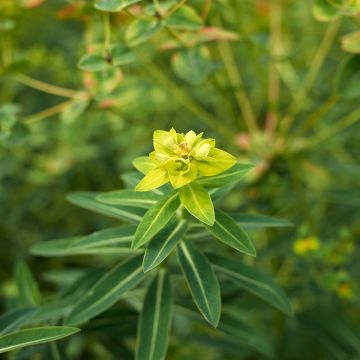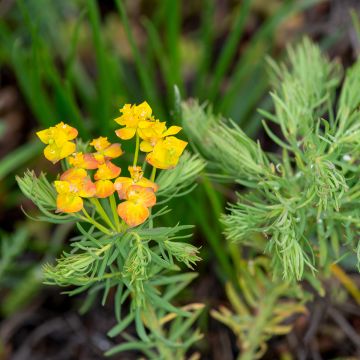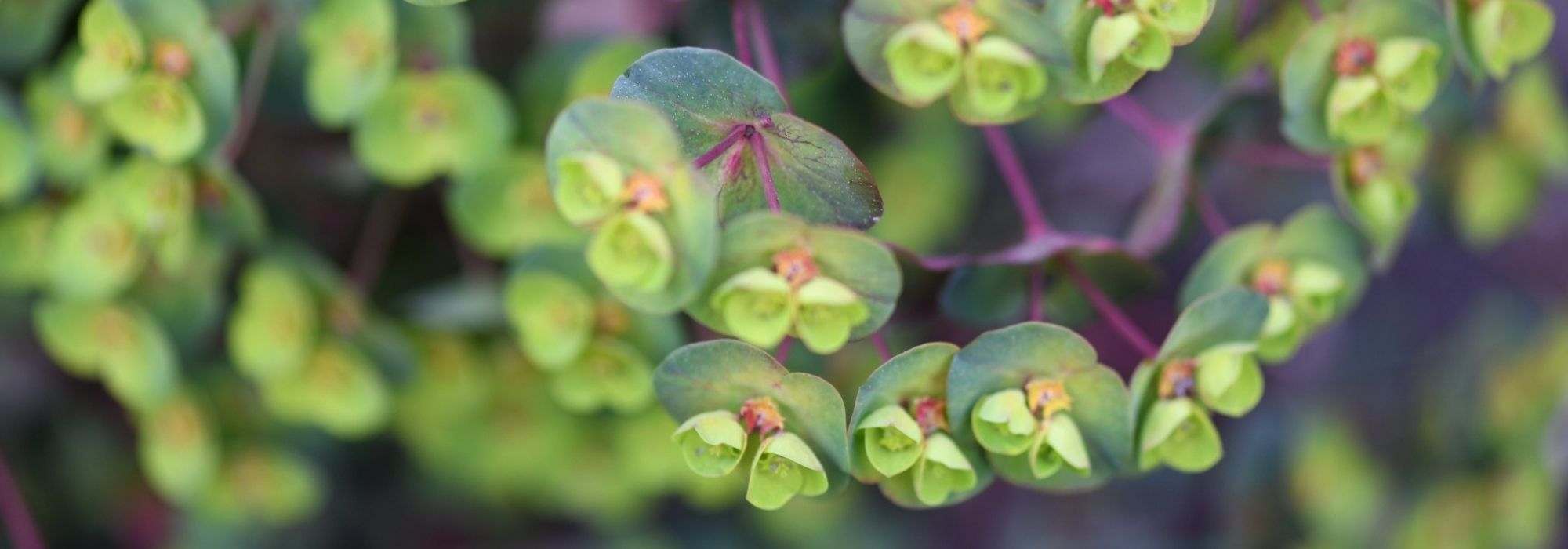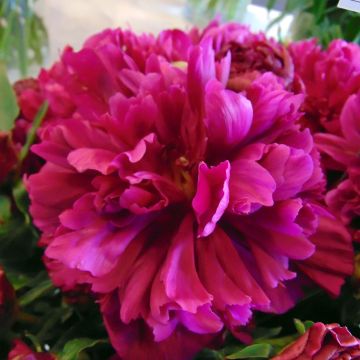

Euphorbia glauca
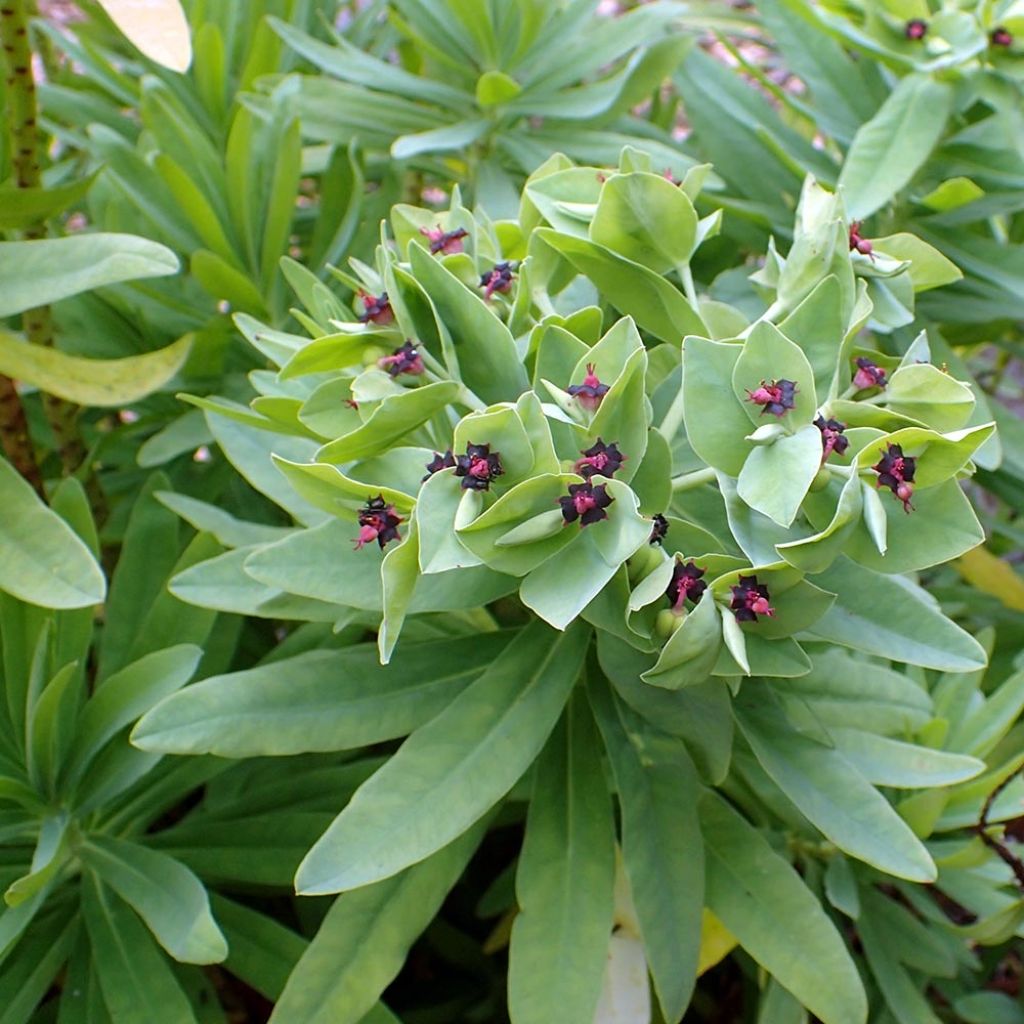

Euphorbia glauca


Euphorbia glauca
Euphorbia glauca - Spurge
Euphorbia glauca
Glaucous Spurge, Sea Spurge
Special offer!
Receive a €20 voucher for any order over €90 (excluding delivery costs, credit notes, and plastic-free options)!
1- Add your favorite plants to your cart.
2- Once you have reached €90, confirm your order (you can even choose the delivery date!).
3- As soon as your order is shipped, you will receive an email containing your voucher code, valid for 3 months (90 days).
Your voucher is unique and can only be used once, for any order with a minimum value of €20, excluding delivery costs.
Can be combined with other current offers, non-divisible and non-refundable.
Why not try an alternative variety in stock?
View all →This plant carries a 12 months recovery warranty
More information
We guarantee the quality of our plants for a full growing cycle, and will replace at our expense any plant that fails to recover under normal climatic and planting conditions.
Would this plant suit my garden?
Set up your Plantfit profile →
Description
The Euphorbia glauca is an endemic species of the coasts of New Zealand, ideal in seaside gardens or well-drained soils of a rockery. It is a perennial cultivated for ornamentation due to the bright blue-grey color of its evergreen foliage, which contrasts wonderfully with its red stems and winter flowering in terminal cymes with deep red and purple bracts. This plant forms a clump of creeping and then erect stems up to 1m (3ft) high which effectively cover difficult terrain and form dense bluish borders. It is easy to grow in full sun or partial shade in well-drained soil, even dry, but it thrives better in cooler conditions.
The Euphorbia glauca belongs to the vast family of euphorbiaceae. It is the only representative species of the genus that is endemic to New Zealand. In its native habitat, it grows along the coasts on cliffs, dunes, slopes, and shores in rocky to sandy soil. It is a plant that withstands drought well but prefers a soil that is not too dry, very well-drained.
The Euphorbia glauca is a rhizomatous perennial plant that develops from a creeping stem, producing numerous stolons that allow it to colonise the soil. Its stems tend to elongate and become bare at the base, so prune it every year after flowering to maintain a compact habit. It reaches about 1m (3ft) in all directions. The plant has a wide and spreading habit with numerous upright, brightly colored red stems. They enhance its narrow, oblong evergreen foliage, 12cm (5in) long, forming compact whorls of bright blue-grey, sometimes pastel green. The flower stems appear between October and February, in umbels of petal-less flowers surrounded by a deep red cup, surrounded by purple bracts. The stems and leaves contain a milky sap that is sticky and toxic.
The Euphorbia glauca will find its place in a dry and sunny rockery, on a wild slope where it will not suffocate its neighbors. Indeed, it can be an invasive plant. It can be associated with other formidable ground covers such as Achillea crithmifolia, Stachys byzantina Big Ears, Georgia Blue speedwell, and Artemisia canescens. It will form beautiful patches of color at the base of bushes, dark-foliaged plants: 'Black Lace' elderberry, Berberis thunbergii Atropurpurea, purple sage, tall sedums like 'Black Jack' or 'Chocolate'. Its aniseed flowering goes well with the blue of creeping rosemary and perennial flax.
Euphorbia glauca - Spurge in pictures






Flowering
Foliage
Plant habit
Safety measures
Botanical data
Euphorbia
glauca
Euphorbiaceae
Glaucous Spurge, Sea Spurge
Oceania
atteintescutaneomuqueuses
Cette plante peut provoquer l'apparition de réactions cutanées indésirables, une atteinte des yeux, ou des difficultés respiratoires si elle est ingérée.
Ne la plantez pas là où de jeunes enfants peuvent évoluer. Evitez tout contact avec la peau: privilégiez l'emploi de gants pour la manipuler. En cas de contact, lavez-vous soigneusement les mains et rincez abondamment à l'eau la zone concernée. Lavez les vêtements entrés en contact. En cas de réaction cutanée, contactez votre médecin ou le centre antipoison le plus proche de chez vous. En cas d'atteinte étendue ou de difficultés respiratoires, appelez immédiatement le 15 ou le 112.Pensez à conserver l'étiquette de la plante, à la photographier ou à noter son nom, afin de faciliter le travail des professionnels de santé.
Davantage d'informations sur https://plantes-risque.info
Other Euphorbia - Spurge
View all →Planting and care
Plant Euphorbia glauca in a light, dry to moist, but above all well-drained soil. A limestone, neutral, or slightly acidic soil is suitable for this plant, which grows spontaneously in the gardens of our Mediterranean regions, here it is arid in summer. Excess moisture in winter can greatly reduce the hardiness of this plant. A soil rich in gravel and stones yields good results. This Euphorbia requires a very sunny exposure in the North, but tolerates partial shade in regions further South. It is advisable to prune the floral stems to ground level as they wither, waiting until the inflorescences are completely faded to avoid excessive latex flow. It is essential to protect your hands from latex as it causes skin inflammation. Pruning is necessary to prevent the plant from becoming unsightly or if one wishes to avoid seed formation.
Planting period
Intended location
Care
Planting & care advice
This item has not been reviewed yet - be the first to leave a review about it.
Similar products
Haven't found what you were looking for?
Hardiness is the lowest winter temperature a plant can endure without suffering serious damage or even dying. However, hardiness is affected by location (a sheltered area, such as a patio), protection (winter cover) and soil type (hardiness is improved by well-drained soil).

Photo Sharing Terms & Conditions
In order to encourage gardeners to interact and share their experiences, Promesse de fleurs offers various media enabling content to be uploaded onto its Site - in particular via the ‘Photo sharing’ module.
The User agrees to refrain from:
- Posting any content that is illegal, prejudicial, insulting, racist, inciteful to hatred, revisionist, contrary to public decency, that infringes on privacy or on the privacy rights of third parties, in particular the publicity rights of persons and goods, intellectual property rights, or the right to privacy.
- Submitting content on behalf of a third party;
- Impersonate the identity of a third party and/or publish any personal information about a third party;
In general, the User undertakes to refrain from any unethical behaviour.
All Content (in particular text, comments, files, images, photos, videos, creative works, etc.), which may be subject to property or intellectual property rights, image or other private rights, shall remain the property of the User, subject to the limited rights granted by the terms of the licence granted by Promesse de fleurs as stated below. Users are at liberty to publish or not to publish such Content on the Site, notably via the ‘Photo Sharing’ facility, and accept that this Content shall be made public and freely accessible, notably on the Internet.
Users further acknowledge, undertake to have ,and guarantee that they hold all necessary rights and permissions to publish such material on the Site, in particular with regard to the legislation in force pertaining to any privacy, property, intellectual property, image, or contractual rights, or rights of any other nature. By publishing such Content on the Site, Users acknowledge accepting full liability as publishers of the Content within the meaning of the law, and grant Promesse de fleurs, free of charge, an inclusive, worldwide licence for the said Content for the entire duration of its publication, including all reproduction, representation, up/downloading, displaying, performing, transmission, and storage rights.
Users also grant permission for their name to be linked to the Content and accept that this link may not always be made available.
By engaging in posting material, Users consent to their Content becoming automatically accessible on the Internet, in particular on other sites and/or blogs and/or web pages of the Promesse de fleurs site, including in particular social pages and the Promesse de fleurs catalogue.
Users may secure the removal of entrusted content free of charge by issuing a simple request via our contact form.
The flowering period indicated on our website applies to countries and regions located in USDA zone 8 (France, the United Kingdom, Ireland, the Netherlands, etc.)
It will vary according to where you live:
- In zones 9 to 10 (Italy, Spain, Greece, etc.), flowering will occur about 2 to 4 weeks earlier.
- In zones 6 to 7 (Germany, Poland, Slovenia, and lower mountainous regions), flowering will be delayed by 2 to 3 weeks.
- In zone 5 (Central Europe, Scandinavia), blooming will be delayed by 3 to 5 weeks.
In temperate climates, pruning of spring-flowering shrubs (forsythia, spireas, etc.) should be done just after flowering.
Pruning of summer-flowering shrubs (Indian Lilac, Perovskia, etc.) can be done in winter or spring.
In cold regions as well as with frost-sensitive plants, avoid pruning too early when severe frosts may still occur.
The planting period indicated on our website applies to countries and regions located in USDA zone 8 (France, United Kingdom, Ireland, Netherlands).
It will vary according to where you live:
- In Mediterranean zones (Marseille, Madrid, Milan, etc.), autumn and winter are the best planting periods.
- In continental zones (Strasbourg, Munich, Vienna, etc.), delay planting by 2 to 3 weeks in spring and bring it forward by 2 to 4 weeks in autumn.
- In mountainous regions (the Alps, Pyrenees, Carpathians, etc.), it is best to plant in late spring (May-June) or late summer (August-September).
The harvesting period indicated on our website applies to countries and regions in USDA zone 8 (France, England, Ireland, the Netherlands).
In colder areas (Scandinavia, Poland, Austria...) fruit and vegetable harvests are likely to be delayed by 3-4 weeks.
In warmer areas (Italy, Spain, Greece, etc.), harvesting will probably take place earlier, depending on weather conditions.
The sowing periods indicated on our website apply to countries and regions within USDA Zone 8 (France, UK, Ireland, Netherlands).
In colder areas (Scandinavia, Poland, Austria...), delay any outdoor sowing by 3-4 weeks, or sow under glass.
In warmer climes (Italy, Spain, Greece, etc.), bring outdoor sowing forward by a few weeks.


































